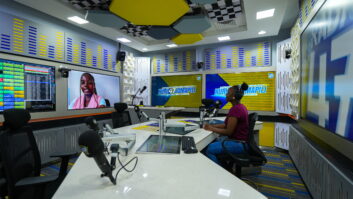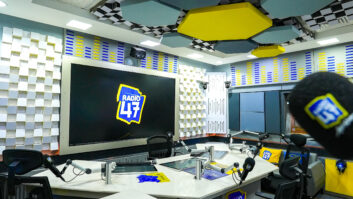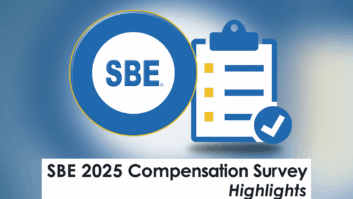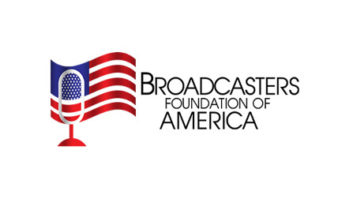As broadcasters begin to envision an IBOC world, some practical issues are being aired.
While some of these may be premature, thinking ahead is preferable to being blindsided in the business world. Let’s consider some of the most salient points to surface thus far.
On the docket
On Dec. 19, 2001, the FCC asked for comment on the NRSC’s “Evaluation of the Ibiquity Corp. IBOC System,” as its latest action under MM Docket 99-325.
The deadline for filing these comments was Feb. 19, 2002, and numerous submissions were made. Most of these could be classified under the heading of commercial broadcasters, equipment manufacturers and trade associations that advocate quick adoption of the Ibiquity system.
Many of these commenters acknowledged their existing relationships to Ibiquity, and most comments were tantamount to letters of support. An exception was the comment of Infinity Broadcasting, which included useful and substantive information gathered from its on-air testing of the system.
Ibiquity itself also filed 100+ pages of supportive data.
But not all the comments were positive. Some alternative opinions came from individuals and groups who questioned the value of the system and advocated the allocation of new spectrum for a Eureka 147-based system, along with LPFM supporters who voiced concern over how IBOC might endanger that fledgling service.
One commercial broadcast operator also cited the well-known Receiver-Induced Third-Order Intermodulation (RITOI) problem, noting how it would also impact FM IBOC service, and recommending that the FCC now take the opportunity to solve it for both analog and digital FM’s benefit.
Among the most interesting of the critical comments came from a variety of nonprofit operations, including National Public Radio, the International Association of Audio Information Services (IAAIS) and Ball State University. These submissions addressed a number of the issues raised in the preceding edition of this column (RW, March 1) regarding the lack of quantitative improvement offered by the Ibiquity format, and the possible negative impact on 92 kHz subcarrier services.
NPR suggested that the FM IBOC format include the option for broadcasters to offer a secondary audio service in its hybrid digital signal (i.e., during the transitional period), similar to the multicast option that the ATSC format for U.S. digital television provides.
In NPR’s view, the Ibiquity FM format could allow a hi-fi DAB service (likely a digital version of the FM analog audio), plus a second, voice-grade digital signal, available on all receivers at a broadcaster’s option.
Both NPR and IAAIS expressed concern over the possible detriment to subcarrier services that the current IBOC system might present, but NPR reserved most of its judgment in this area due to ongoing tests. (Not mentioned in the comments was Ibiquity’s continued funding of such testing, currently underway at the Advanced Television Test Center.)
Test results for the IBOC-AM format also are still pending, and thus were not included in the commission’s current call for comments. A subsequent call for additional comments likely will be made once the AM test results are reported.
NPR’s submission reiterated its support for the suggestion in the FCC’s original NOI on DAB regarding possible reallocation of TV Channel 6 (82-88 MHz) to new, all-digital radio services. As one might expect, several television-industry commenters had earlier filed comments against this idea, including, ironically, the Association of Public Television Stations.
Indecent proposal?
On a wholly different track, reports are surfacing on how Ibiquity plans to license its technology to broadcasters.
The proposal Ibiquity currently is floating around the industry would levy a one-time licensing fee to each radio station for use of the format. The suggested pricing of this license would be 15 times a station’s FCC license fee.
For FM stations in the largest markets, IBOC licensing fees to Ibiquity would therefore amount to $68,250 per station. For multi-station operators in major markets, this could result in nearly half a million dollars in payments to Ibiquity, over and above the physical costs of conversion — as outlined in the February 13, 2002 edition of RW.
This explains the blank “IBOC licensing” line item in the chart on p. 20 of that issue, which some readers may have mistakenly attributed to a yet-undetermined regulatory surcharge to be levied by the FCC, and which was therefore expected to have negligible impact on the bottom line. Instead, it could be something that inflates previous estimates of conversion cost by nearly 50 percent in some markets.
For noncommercial stations, which pay no FCC license fee, Ibiquity has proposed $3,750 IBOC licensing for each station, regardless of market size.
This also recalls an issue noted in the previous edition of this column regarding the lack of an open standards process for U.S. DAB. Unlike other broadcast standards, in which a group of companies that contribute intellectual property to an open standard shares in licensing revenue paid by equipment manufacturers only, Ibiquity apparently intends to unilaterally establish a fee structure for payment of licensing from broadcasters, as well.
In addition, basing a technology licensing fee on a multiple of a regulatory licensing fee is unusual, and could be argued as violating of the generally accepted principle of reasonable and non-discriminatory (RAND) licensing practice.
IBOC continues to break new ground, and its story is far from over. NAB2002 may see some additional plot twists and cliffhangers. Stay tuned, as the saga continues.







